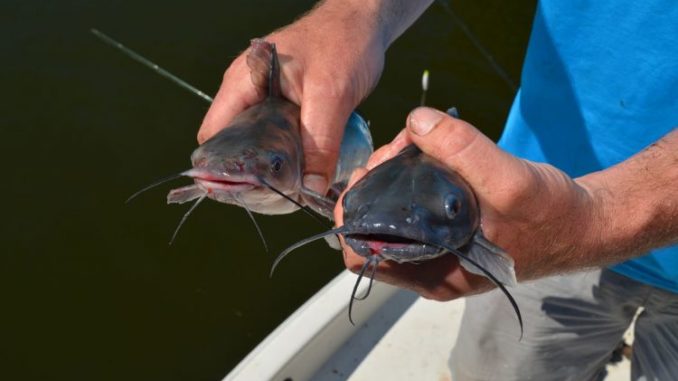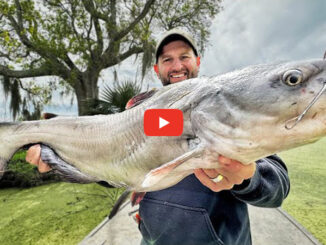
“I only fish for catfish in Lake Des Allemands at the end of March, all of April and the beginning of May,” said Rudy Roussel firmly.
“The fishing slows down after that and I change to bass fishing.”
The biology of the beasts may be why. Channel catfish, the main species they catch in the lake, are prolific spawners. Like blue catfish and flathead catfish, they nest in cavities — under stumps, in hollow logs, in holes dug into lake and bayou banks and in any man-made debris that is convenient. Five gallon buckets and old automobile tires work just dandy for the protective fish.
In April, males’ heads swell dramatically and their body color darkens. And they begin their search for cavities in which to spawn. Using their muscular jaws, they scour clean the interior surface of their cavity and sweep out all silt and debris with their fins.
In May, females swollen with eggs search for a mate in possession of a good nest. After brief courtship, mating occurs and the female leaves her eggs to the male to guard.
As soon as the young catfish leave the nest, the male prepares the cavity for the next mating. This goes on all summer, from May into early September. Males, half the population, seldom get to forage for food, so they lose weight and the texture of their flesh deteriorates noticeably. And they aren’t available for hook-and-line fishermen to catch, either.
The pre-spawn period centered in April, when the fish feed voraciously in the warming waters of spring, is when Roussel focuses his effort on the fish.
